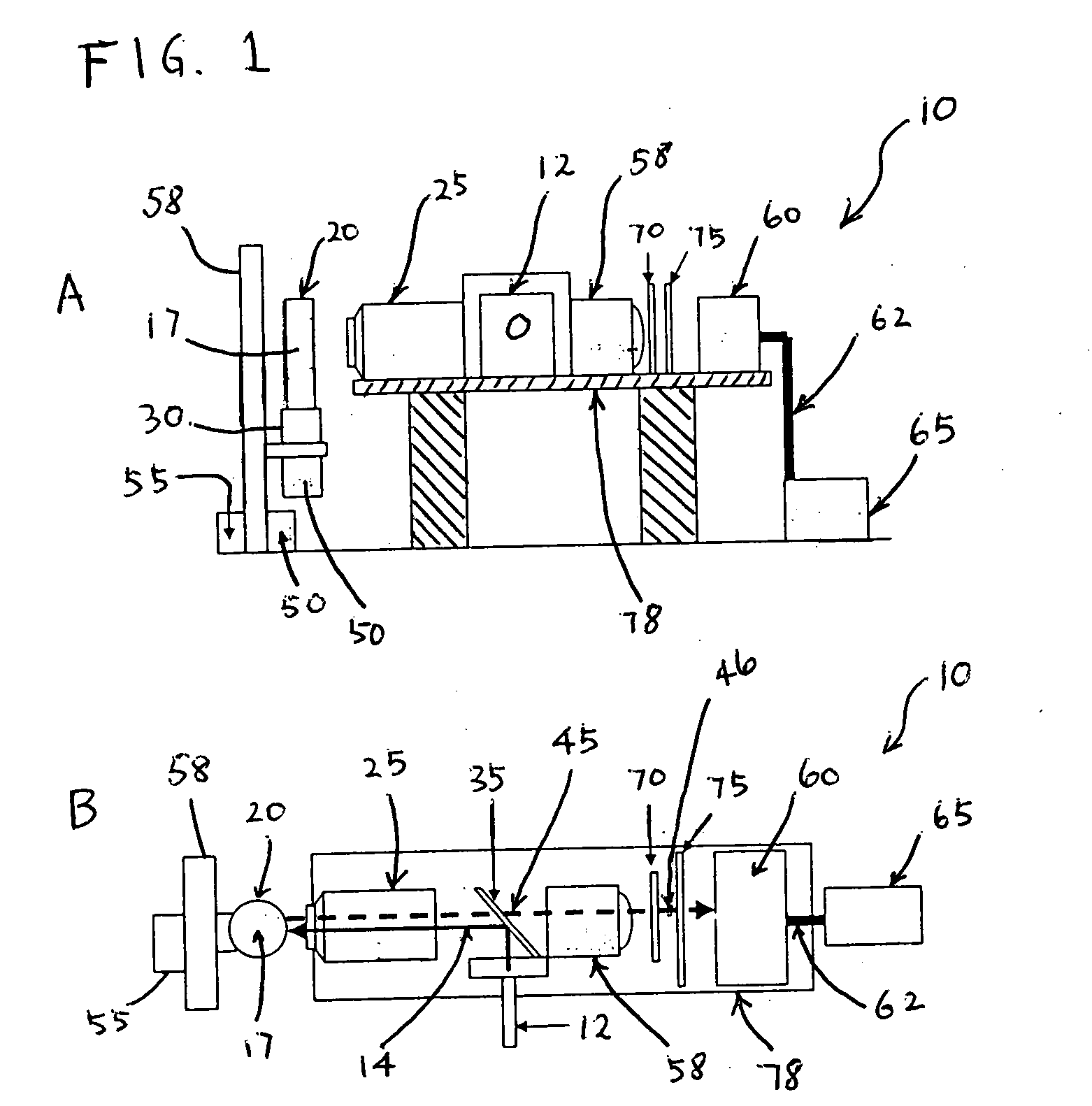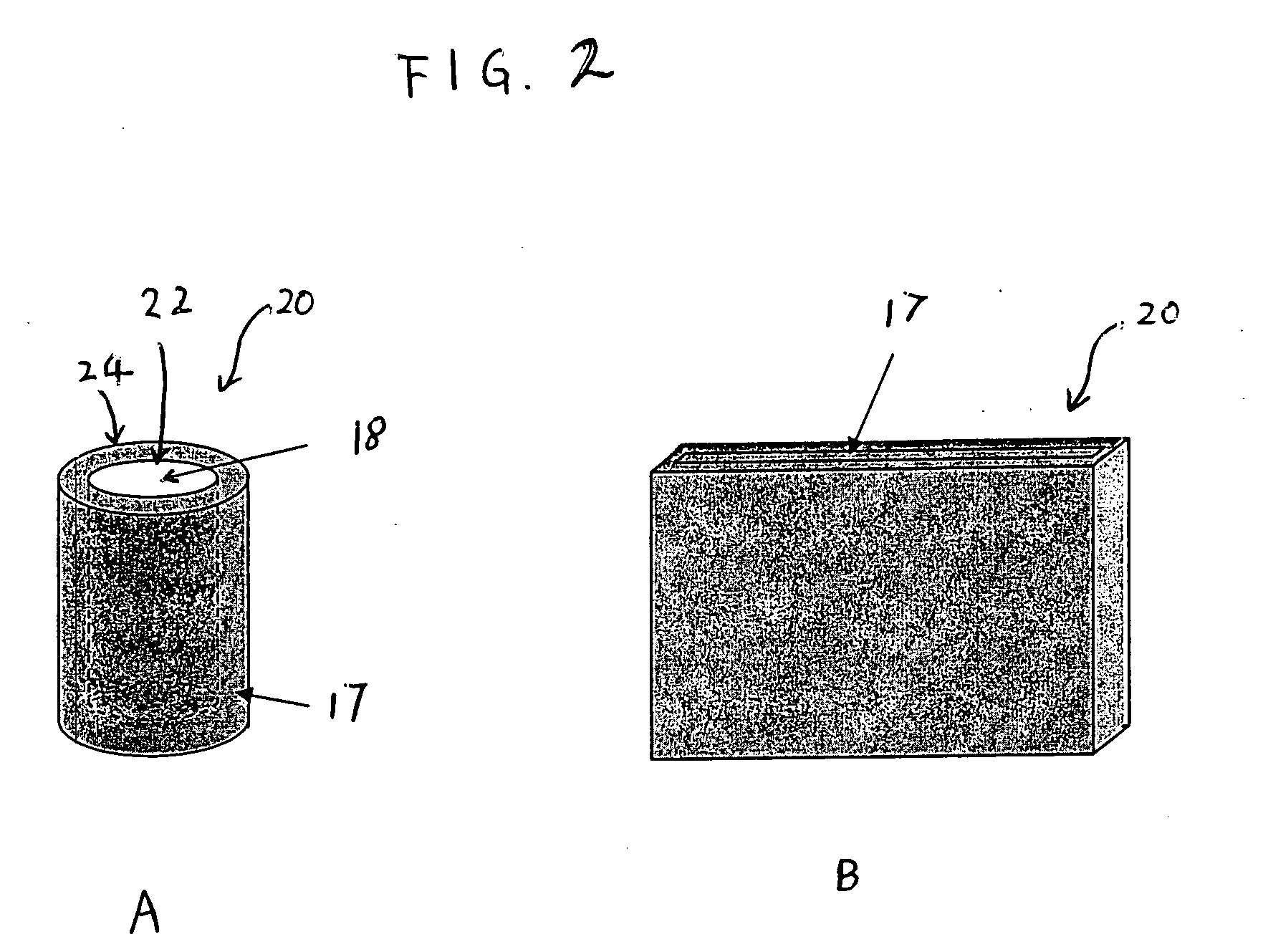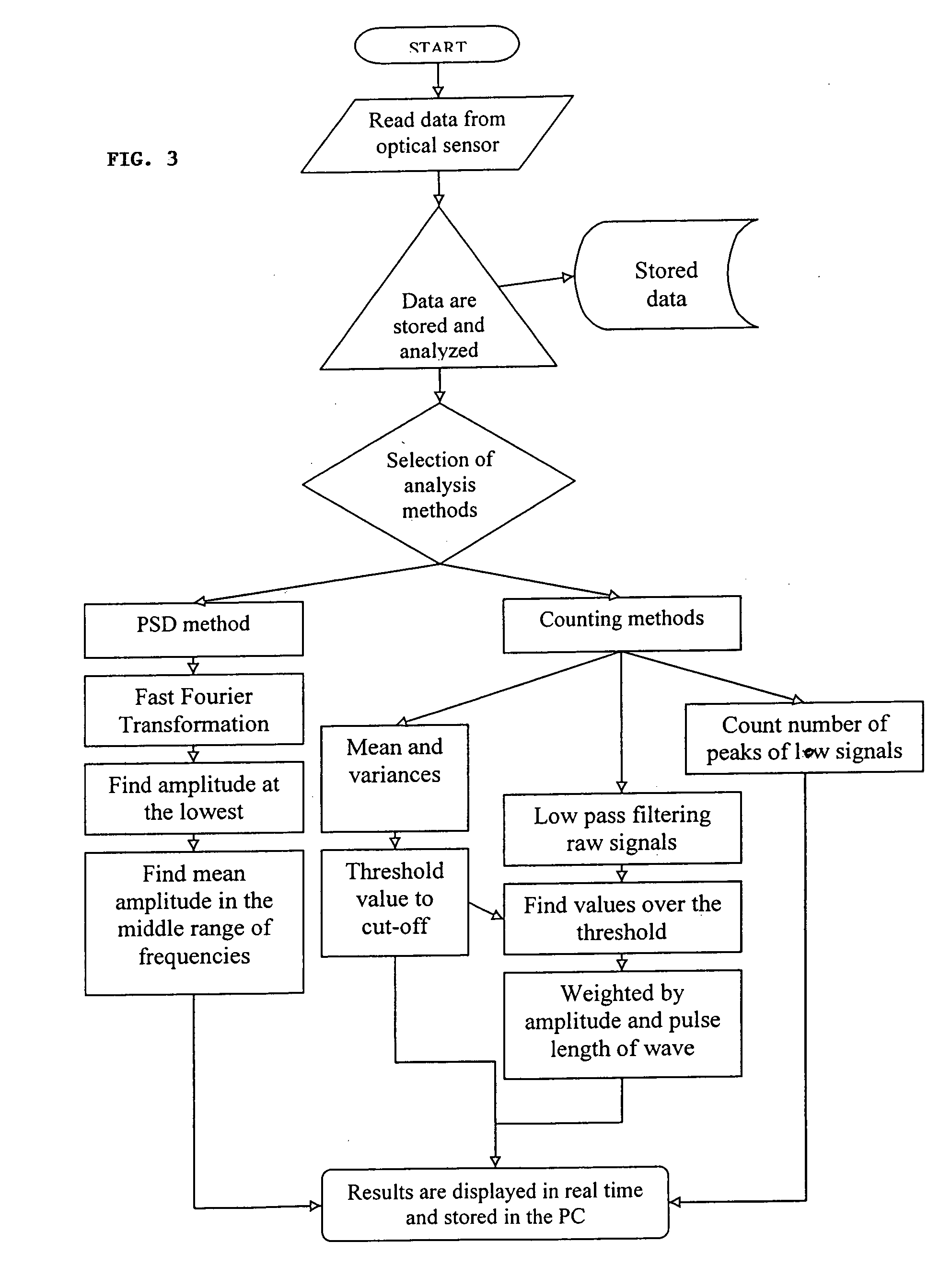Ultrasensitive sensor and rapid detection of analytes
a technology of ultrasonic sensors and analytes, applied in nanoinformatics, instruments, material analysis, etc., can solve the problems of false positives/negatives, complex multiple assay systems with a relatively high cost, and current detection methods that do not meet the requirements of ideal detection systems,
- Summary
- Abstract
- Description
- Claims
- Application Information
AI Technical Summary
Problems solved by technology
Method used
Image
Examples
example 1
Detection of Fluorescent Microspheres
[0112] The number of fluorescent peaks are counted and correlated to the concentration of fluorescent microspheres. The diameter of the microspheres is approximately 2.5 μm and it has a 630 / 640 nm Ex / Em spectrum. A cuvette containing diluted microspheres in a final volume of 4 ml of 0.1M PBS was then subjected to simultaneous vertical and rotational motions. The vertical and rotational speeds of the cuvette movement were 0.8 inch / sec and 300 rpm, respectively. Data was acquired at a sampling rate of 100 kHz for 2 minutes. Raw data was analyzed and the result was displayed as described previously in this application, which enumerated the number of fluorescent signals whose pulse width was between 0.05-0.2 milliseconds and pulse amplitude was greater than that of mean background plus 3 times of standard deviation (mean+3 SD).
[0113] The results are shown in FIG. 9. Five different sets of experiments were carried out in different days. The fluoresc...
example 2
Detection of Salmonella by Using Polyclonal Antibodies Conjugated with Fluorescent Dyes in Phosphate Buffer
[0114]Salmonella typhimurium (ATCC #14028) was grown in 5 ml of LB media overnight at 37° C. The culture was washed and centrifuged in PBS buffer, pH 7.0 twice at 8,000×g for 10 minutes. The cell pellet was reconstituted to its original concentration in PBS. The overnight culture was close to the standard concentration of 5×109 cells / ml. The overnight culture was diluted with 0.1 M PBS buffer to prepare a range of concentrations from 0 cell / ml to 106 cells / ml in 1 ml total volume of PBST (0.1 M PBS, 0.01% Tween 20). A portion of each diluted culture was plated on S. typhimurium selective agar and incubated at 37° C. for overnight to verify actual colony forming unit (CFU).
[0115] In each samples, 100 μl (approximately 105 beads, 0.86 μm in diameter) of magnetic microspheres coated with polyclonal antibodies for Salmonella was added followed by 30 minutes at room temperature wi...
example 3
Detection of Salmonella by Using Polyclonal Antibodies Conjugated with Fluorescent Dyes in Ground Beef
[0117] By using Alexa Fluor conjugated polyclonal antibodies, S. typhimurium was detected in spiked ground beef. 25 g of ground beef was added into 225 ml of PBST in a sterile stomacher bag. After stomaching at 280 rpm for 2 minutes at room temperature, an aliquot of beef homogenate was spiked with S. typhimurium in a total volume of 1 ml of PBST. The samples were incubated with magnetic beads (approximately 105 beads, 0.86 μm in diameter) coated with polyclonal antibodies for Salmonella sp. for 10 minutes at room temperature followed by 2 times of the washing step (2 minutes / each wash). The resulting pellet was resuspended with PBST and incubated with 9 μg of polyclonal antibodies for Salmonella conjugated with AlexaFluor 633 for 30 minutes at room temperature. The sample underwent the same washing step as described above before being transferred into a cuvette.
[0118] The measure...
PUM
 Login to View More
Login to View More Abstract
Description
Claims
Application Information
 Login to View More
Login to View More - R&D
- Intellectual Property
- Life Sciences
- Materials
- Tech Scout
- Unparalleled Data Quality
- Higher Quality Content
- 60% Fewer Hallucinations
Browse by: Latest US Patents, China's latest patents, Technical Efficacy Thesaurus, Application Domain, Technology Topic, Popular Technical Reports.
© 2025 PatSnap. All rights reserved.Legal|Privacy policy|Modern Slavery Act Transparency Statement|Sitemap|About US| Contact US: help@patsnap.com



